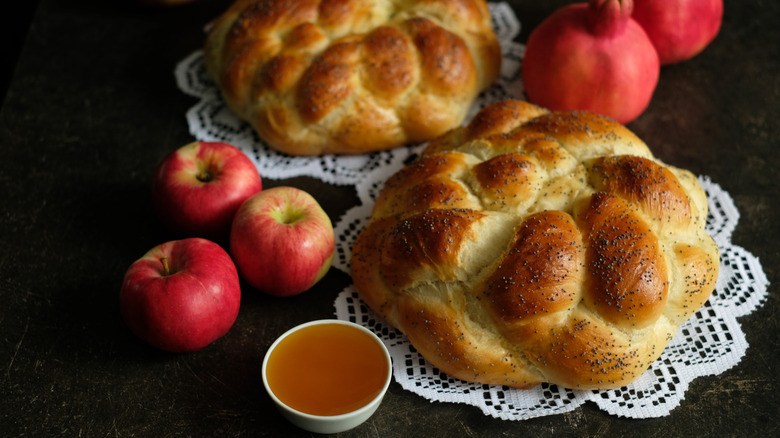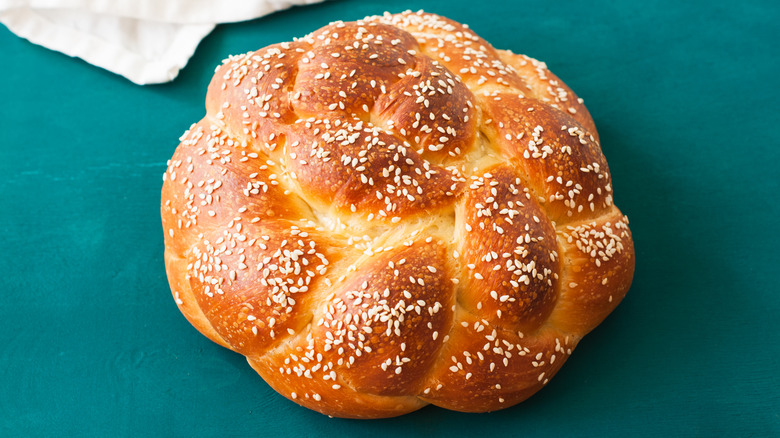The Reason Challah Is Round For Rosh Hashanah
Rosh Hashanah began at sundown on September 25 and will end at nightfall on September 27 this year. Also known as the Jewish New Year, this is the time of year when Jews all over the world celebrate the creation of the world (via History). According to Jewish Virtual Library, it also marks the start of Days of Awe, a 10-day period when Jews take time for deep reflection and make amends with family or friends they may have offended in the past year.
One of the ways Jews celebrate this New Year holiday is with food such as challah, one of the essential elements of Judaism. Made with eggy yeast dough and oil, challah is a soft, braided holiday bread that typically has a shiny, golden brown appearance. It's made in different sizes and shapes throughout the year to represent a specific theme or event in history (per My Jewish Learning).
For example, challah is baked every week in a long-loaf form as part of Shabbat, the Jewish sabbath (via Modernist Bread). Two loaves, to be exact. According to Chabad.org, the two loaves represent the double portion of heaven-sent manna that the Israelites collected daily, as detailed in Exodus 16:4-5. For Rosh Hashanah, it's specially baked as a round loaf to represent a specific theme.
The Challah's round shape aligns with a focal point of Rosh Hashanah
Since Rosh Hashanah is a time of celebration, what better way to spend the days than with family? According to Kveller, it's common for people to congregate in homes for large family meals during this two-day period, and on the table, you'll find loaves of round challah. The circular shape represents the circle of life, which appropriately aligns with the commemoration of creation during Rosh Hashanah.
Mimi Wilhelm, an experienced challah baker, told NPR that she describes the challah's round shape as a representation of a crown. "The reason that we do the round challah versus the braids for Rosh Hashanah is because the year is round — it represents that idea. This looks like a crown, for crowning God as king on Rosh Hashanah."
The round shape also symbolizes the desire for "goodness without end" for the upcoming year (via Chabad.org). But the shape isn't the only element of challah that represents hopes of prosperity during this New Year holiday. The bread is also dipped in honey to symbolize hope for the future. Some bakers also add raisins to the bread to make them sweeter.
There are many other challah recipe variations for Rosh Hashanah. According to Charles Levy, the former president of the Congregation Ahavath Achim, there are other shapes as well (per NPR). Regardless of the variations, this special bread will always be an important component of the Jewish New Year.

